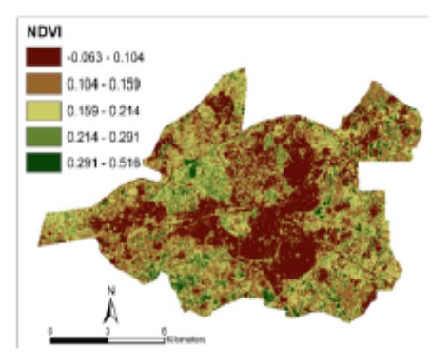


Indian Journal of Science and Technology
Year: 2024, Volume: 17, Issue: 15, Pages: 1535-1544
Original Article
Kiran Kumari Singh1*
1Department of Geography, University of Allahabad, Prayagraj, Uttar Pradesh, India
*Corresponding Author
Email: [email protected]
[email protected]
Received Date:29 January 2024, Accepted Date:14 March 2024, Published Date:04 April 2024
Objective: The present study aims to investigate thermal comfort in two cities in Punjab, India based on land surface temperature (LST), urban hot spots (UHS) and urban thermal field variance index (UTFVI). Method: Landsat 8 OLI/TIRS data are used to derive land surface temperature (LST), normalized difference vegetation index (NDVI) and enhanced built-up and bareness index (EBBI) for the year 2019. UTFVI reflects urban thermal conditions and demarcates comfort and discomfort zones in the cities. Findings: The results revealed that the mean LST (μ) of Ludhiana and Amritsar cities is 32.80 °C and 30.70 °C, respectively. LST shows a strong negative correlation with NDVI (-0.710 for Amritsar and -0.754 for Ludhiana) and a positive correlation with EBBI (0.531 for Amritsar and 0.541 for Ludhiana). About 57 and 52 per cent of geographical areas in Ludhiana and Amritsar city respectively are experiencing bad to worst ecological conditions. Novelty: (i) The study derived LST-based thermal comfort for the summer month in Amritsar and Ludhiana cities of Punjab which provide important information to urban planners and policymakers to design sustainable urban development policies to mitigate heat-related issues. (ii) Such information can be used to take steps to improve the situation in smart cities like Amritsar and Ludhiana.
Keywords: Land surface temperature (LST), urban thermal field variance index (UTFVI), NDVI, Landsat 8, Punjab
© 2024 Singh. This is an open-access article distributed under the terms of the Creative Commons Attribution License, which permits unrestricted use, distribution, and reproduction in any medium, provided the original author and source are credited. Published By Indian Society for Education and Environment (iSee)
Subscribe now for latest articles and news.